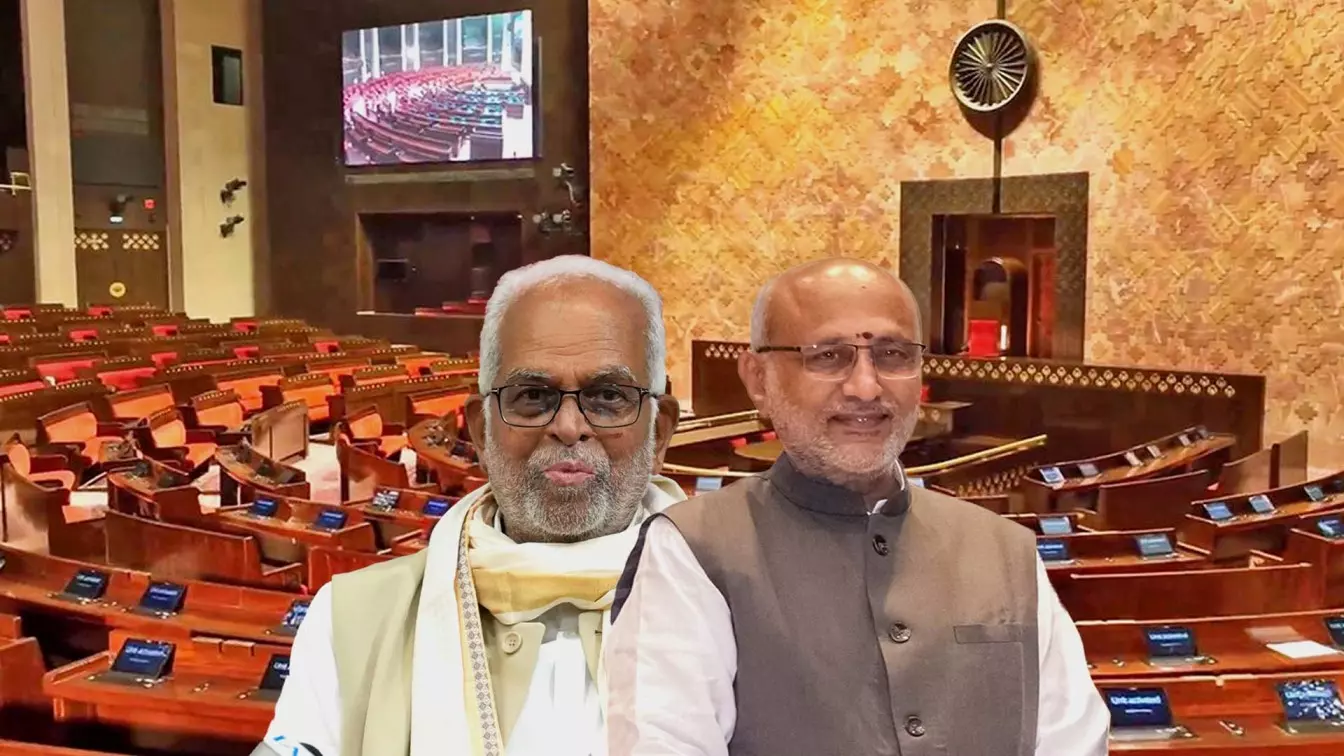
How is vice president of India elected? | C P Radhakrishnan | Sudershan Reddy | The Federal |
How is vice president of India elected? Election process explained | CP Radhakrishnan vs Sudershan Reddy
India votes on Sept 9 to elect its next vice president. Will NDA’s CP Radhakrishnan secure an easy win, or can INDIA bloc’s B. Sudershan Reddy spring a surprise?

India's vice-presidential election is scheduled for Tuesday (September 9). The contest is shaping up between National Democratic Alliance (NDA)-backed C P Radhakrishnan and Indian National Developmental Inclusive Alliance (INDIA) bloc’s candidate, former Supreme Court judge B Sudershan Reddy.
With the NDA holding a majority in both Houses of Parliament, political observers predict a comfortable victory for Radhakrishnan. The winning candidate will succeed Jagdeep Dhankhar, who stepped down in July after serving for less than three years.
The vice president of India is chosen through an indirect election by an electoral college comprising members of both Lok Sabha and Rajya Sabha. Unlike the presidential election, state legislators do not take part in this process. This year, 782 MPs will cast their votes due to six vacancies across the two Houses.
The winner is determined using a simple formula: The total number of valid votes divided by two, with one added to the result. With the current strength, the “magic number” required to win is 392.
Election process explained
Voting for the vice president follows the single transferable vote system through proportional representation. Each MP casts a secret ballot, ranking candidates in order of preference. The Election Commission oversees the polling and appoints a returning officer to ensure a smooth conduct.
To be eligible, a candidate must be an Indian citizen, at least 35 years old, qualified to be a Rajya Sabha member, and not hold an office of profit under the Union or state governments.
The vice president serves a five-year term but may be re-elected multiple times. The officeholder is also the ex officio chairman of the Rajya Sabha, presiding over its proceedings, and occupies the second-highest constitutional office after the president.
Likely outcome
According to current numbers, Radhakrishnan, a 68-year-old Bharatiya Janata Party veteran, is expected to secure around 423 votes, well above the winning threshold. His candidature, backed by the NDA, makes his path to becoming the 15th vice president of India appear smooth.
Meanwhile, Reddy, supported by the INDIA bloc and allies, faces an uphill battle. His numbers are unlikely to challenge the NDA’s majority, leaving him as the likely runner-up.
Constitutional significance
The vice president’s role goes beyond being a ceremonial deputy. As Rajya Sabha chairman, the incumbent plays a crucial role in moderating debates and ensuring the smooth functioning of the Upper House.
This election will not only decide who becomes the constitutional second-in-command but also signal the balance of power in Parliament ahead of crucial legislative battles.
The content above has been transcribed using a fine-tuned AI model. To ensure accuracy, quality, and editorial integrity, we employ a Human-In-The-Loop (HITL) process. While AI assists in creating the initial draft, our experienced editorial team carefully reviews, edits, and refines the content before publication. At The Federal, we combine the efficiency of AI with the expertise of human editors to deliver reliable and insightful journalism.

